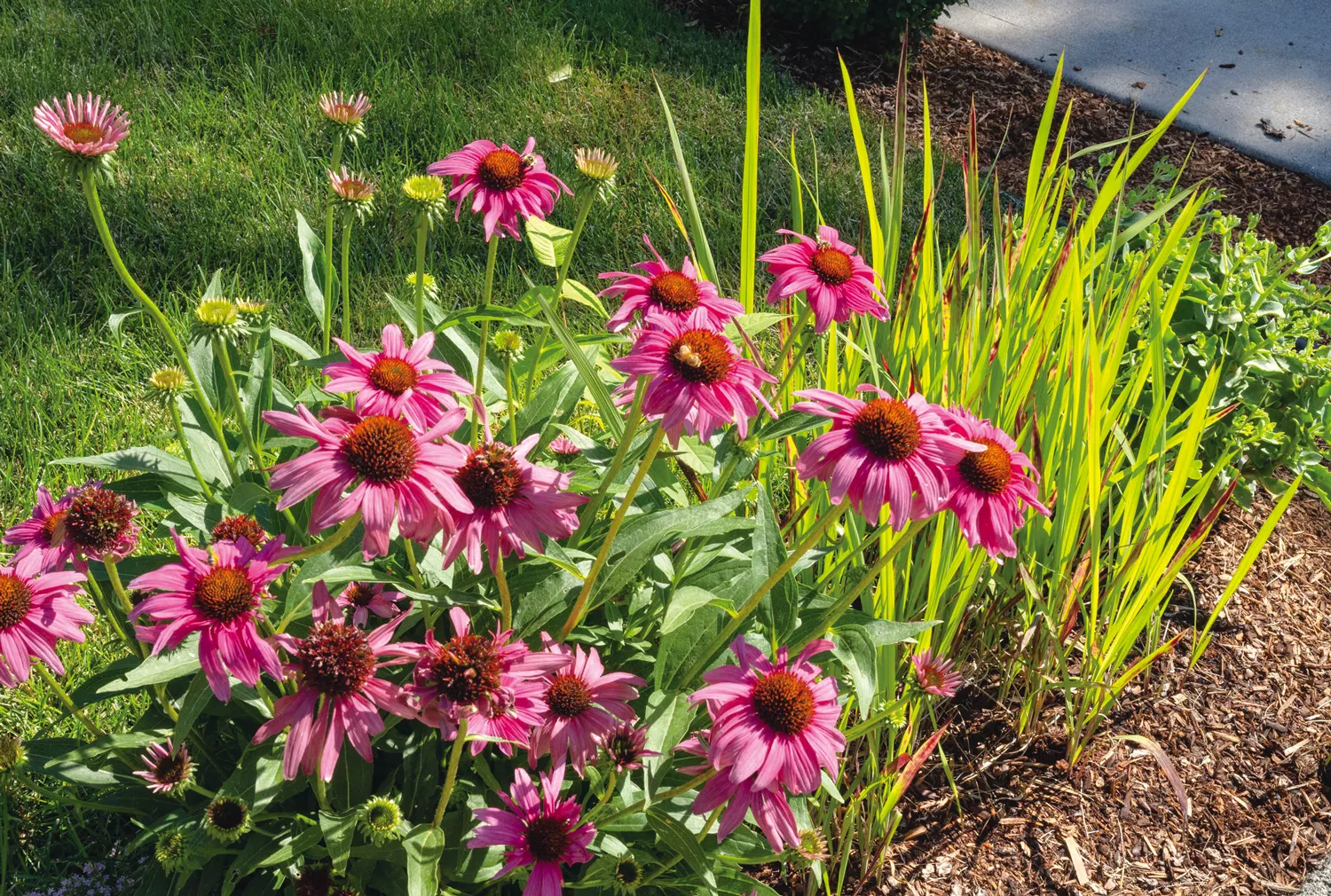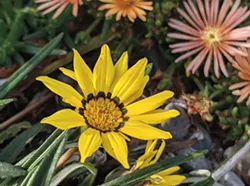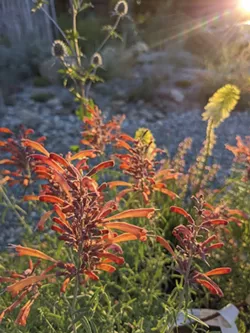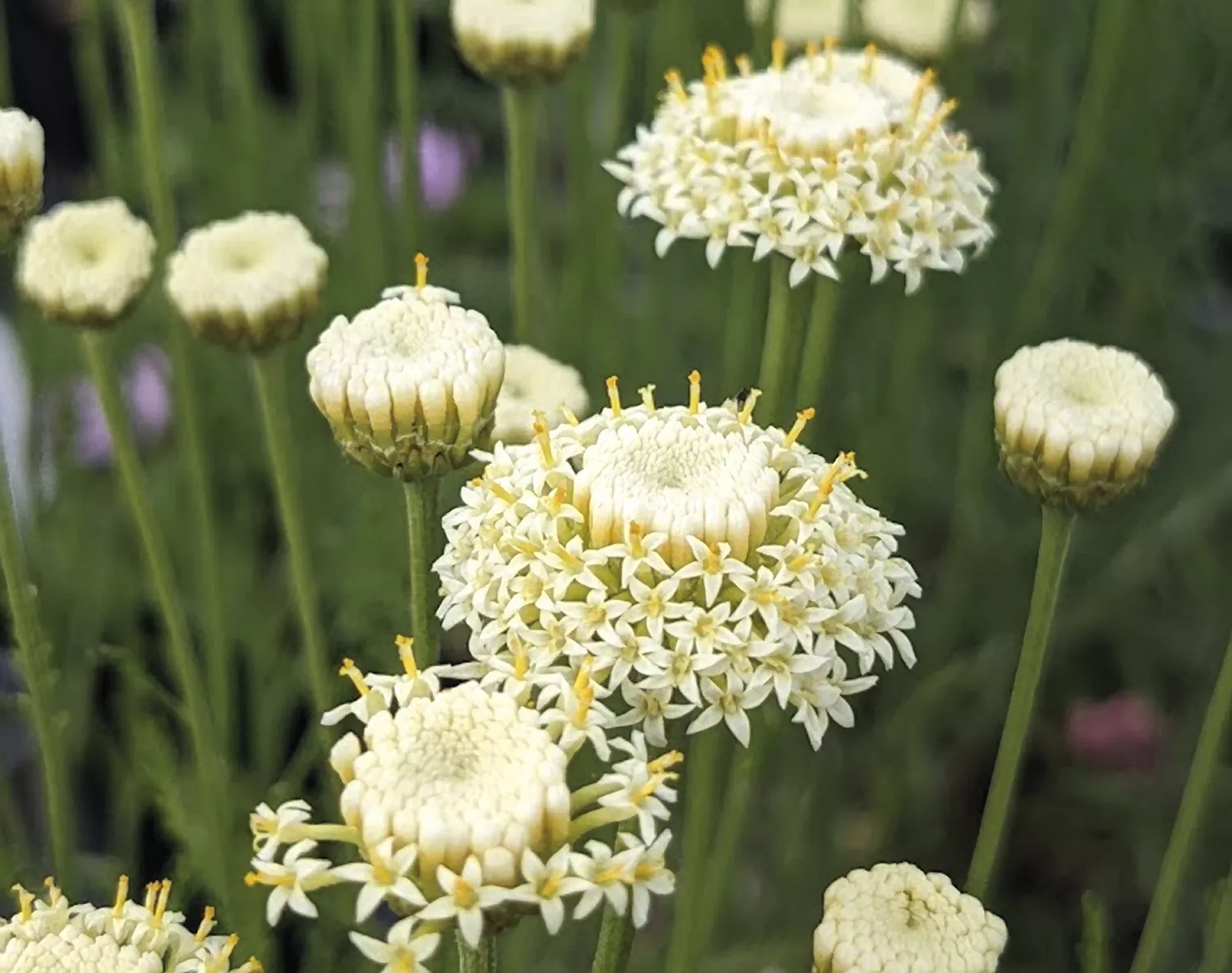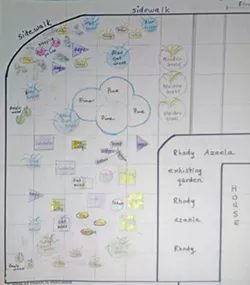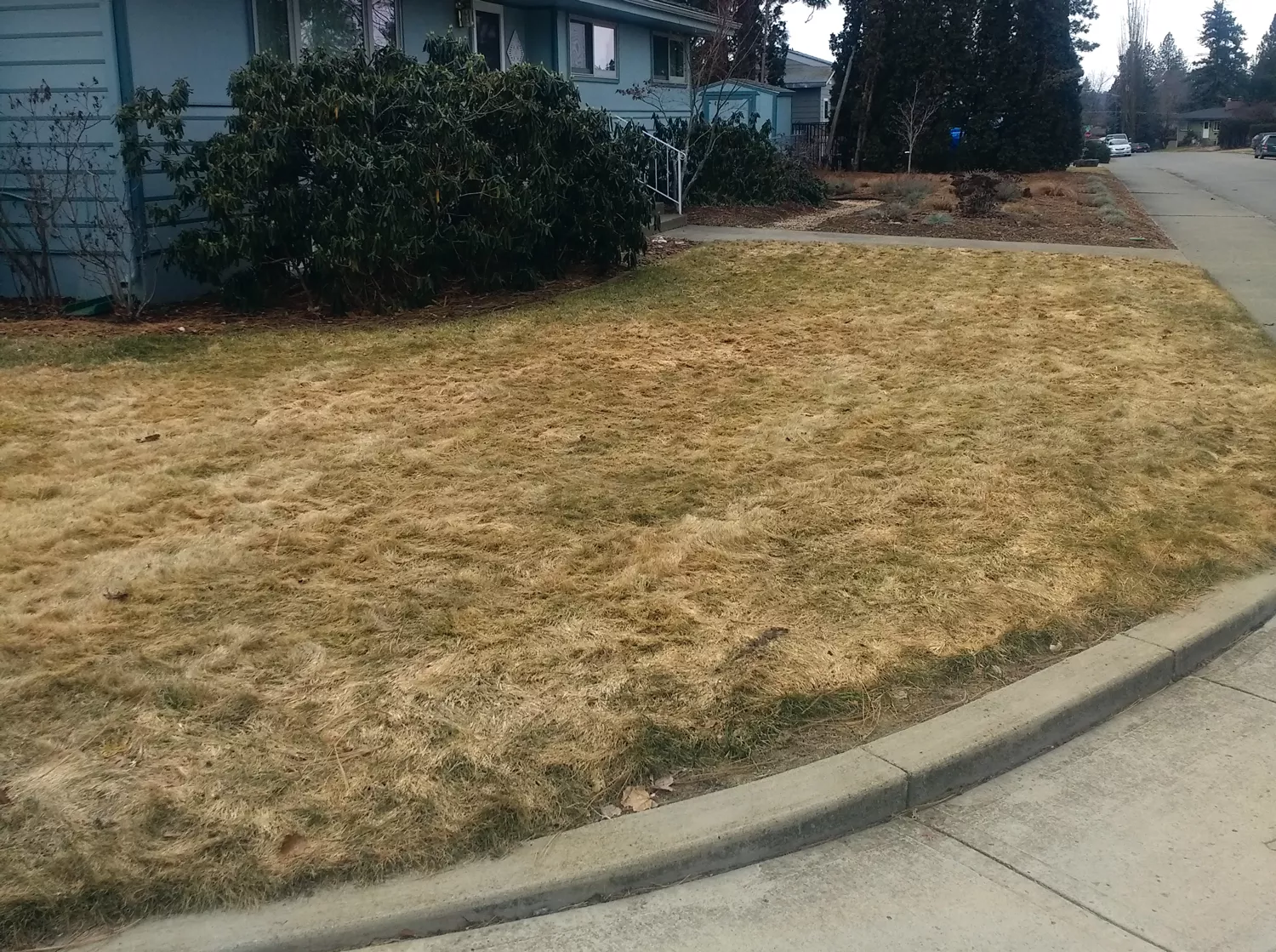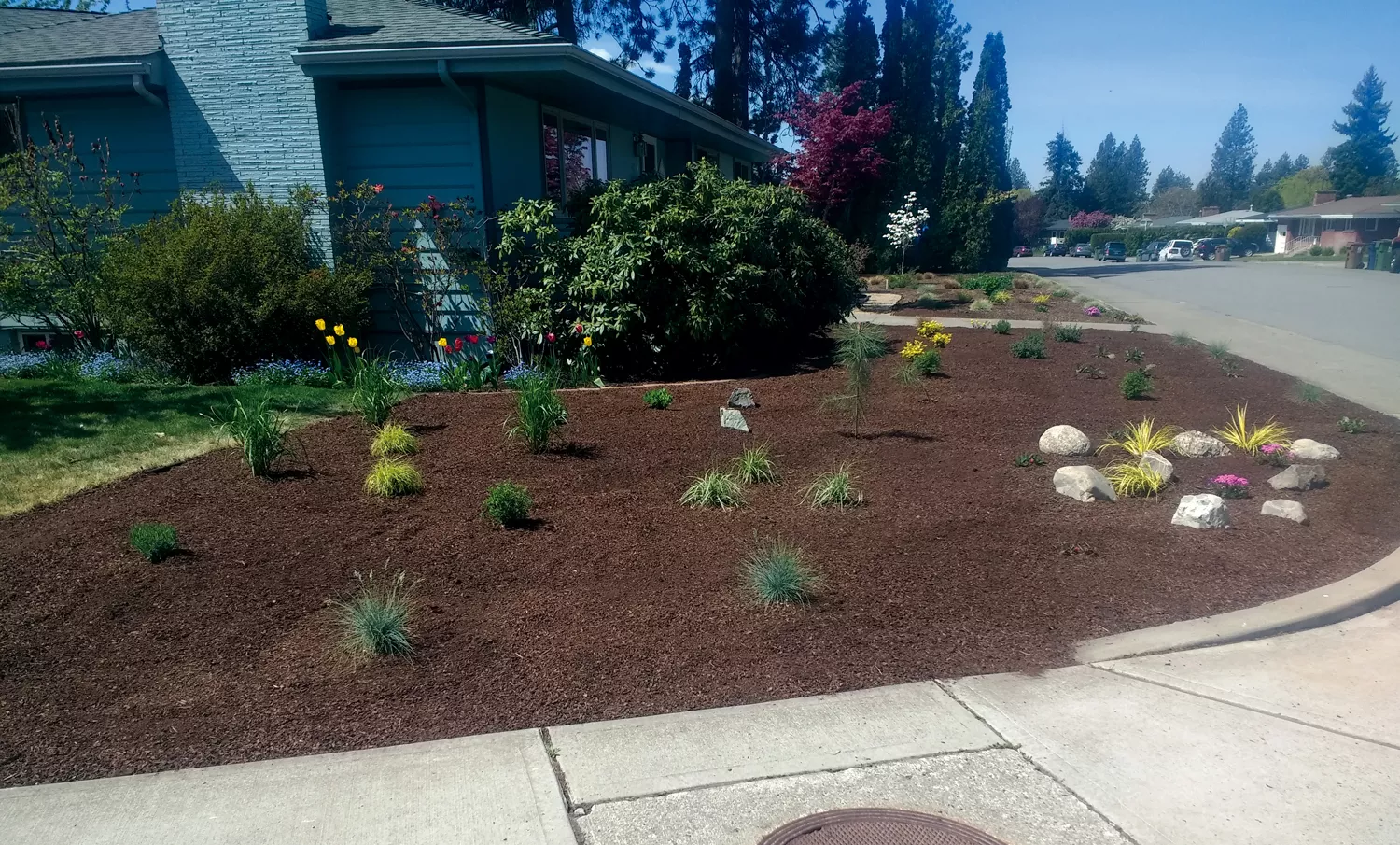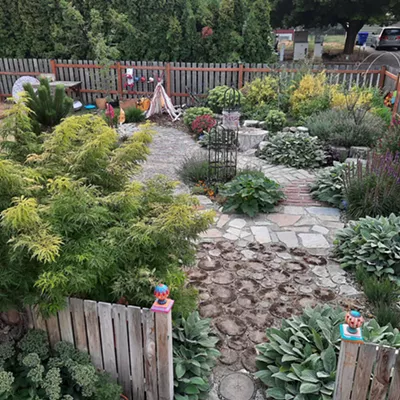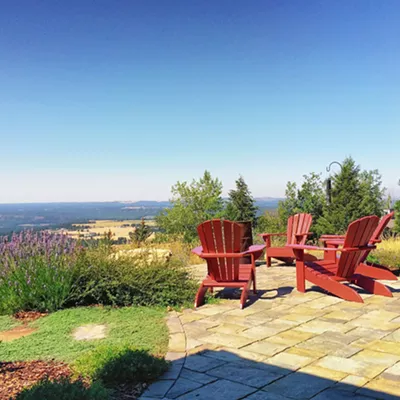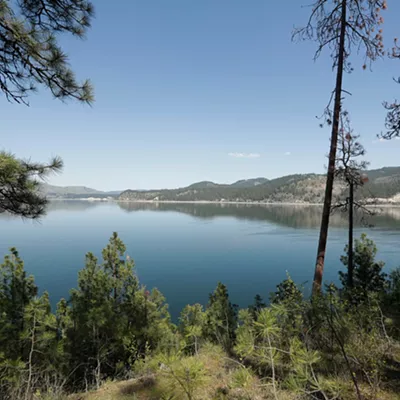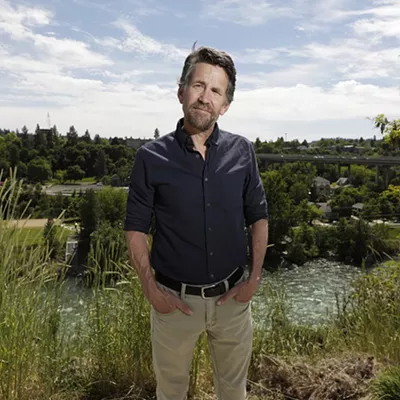
As summers in the Inland Northwest become hotter and drier, environmental advocates, municipal water departments and property owners are openly questioning the practicality of the traditional grass lawn.
In Spokane proper, landscaping irrigation accounts for over 80 percent of all residential water use. Whether you're viewing that statistic through the lens of resource conservation or cost savings, the very thirsty landscaping trends of yesteryear are hard to justify — particularly in the face of climate change.
But before you start swapping your grass for rocks or wood chips, it's helpful to know the lay of the land. Is xeriscaping — pronounced a bit like "zero-scaping," with xeri meaning "dry" — a quick, easy and total solution? Can you take the DIY route, or do you need to call in the professionals? Are there any other benefits to non-grass yards? Does eliminating grass mean sacrificing curb appeal? And do you really end up saving money and time in the long run?
Preliminary Considerations
In the run-up to removing your lawn, the best preparation is to identify your motivations for doing so. That can help determine your timeline, your plant selection, and whether you want to go all in or leave grass in select areas like the backyard."I think people do it for a few different reasons. Water conservation is usually probably the biggest," says Kyle Merritt, a water efficiency specialist at the Spokane's city Water Department. "A lot of people also don't like that lawns provide zero habitat for wildlife, so they want to do something for pollinators and bird habitat."
For Merritt, who also coordinates the city's SpokaneScape program, maintenance was another factor. Before he was even in his current position, he opted for xeriscaping because the constant care — mowing, edging, weeding, watering — was an uphill battle. Now that he's no longer "pushing the lawnmower around the block, dragging the hose all over the place," he saves the time he used to spend on nursing lifeless patches of grass.
It's also smart to have a basic plan before shovel hits dirt. While there's nothing preventing homeowners from transforming their yard over the course of a weekend or two, Merritt says it's more common for them to follow a phased approach.
As one summer comes to a close, future xeriscapers will stop watering and let the grass die. During the winter, they'll start researching the plants and landscaping designs that they might like to incorporate. The yardwork begins in spring and starts by smothering the grass with cardboard or thick paper, known as sheet mulching, or mechanical stripping.
The SpokaneScape program tries to facilitate both the planning and the execution through resources and incentives. They have detailed guides on drip irrigation installation, turf removal methods, suggested plants, design templates and more. Property owners can qualify for a credit of up to $500 for a xeriscape conversion that meets a few basic requirements. There's also an additional $200 available for converting an existing irrigation system.
"We really try to help. We have great resources on the website, including different how-to videos that you can watch," Merritt says. He even makes a personal onsite consultation once property owners have submitted a proposed plant list to SpokaneScape.
"I'll spend an hour-plus with somebody to answer questions for any part of the process. This year, we're also hiring a landscape designer who can come out and assist people with their project."
The Pros and Cons
The prospect of a lower-cost, lower-maintenance yard that conserves the Spokane Valley-Rathdrum Prairie Aquifer, comes with personal guidance and nets homeowners up to $700 in incentives is certainly an appealing one.
However, Merritt acknowledges that it's easy to romanticize the maintenance-free vision of lawn removal.
"If people think they're going to tear out their lawn, put down some wood chips, put in some drought-tolerant plants, and they're not going to have to do anything, they're going to be sorely mistaken. They'll have a weed field in no time," he says.
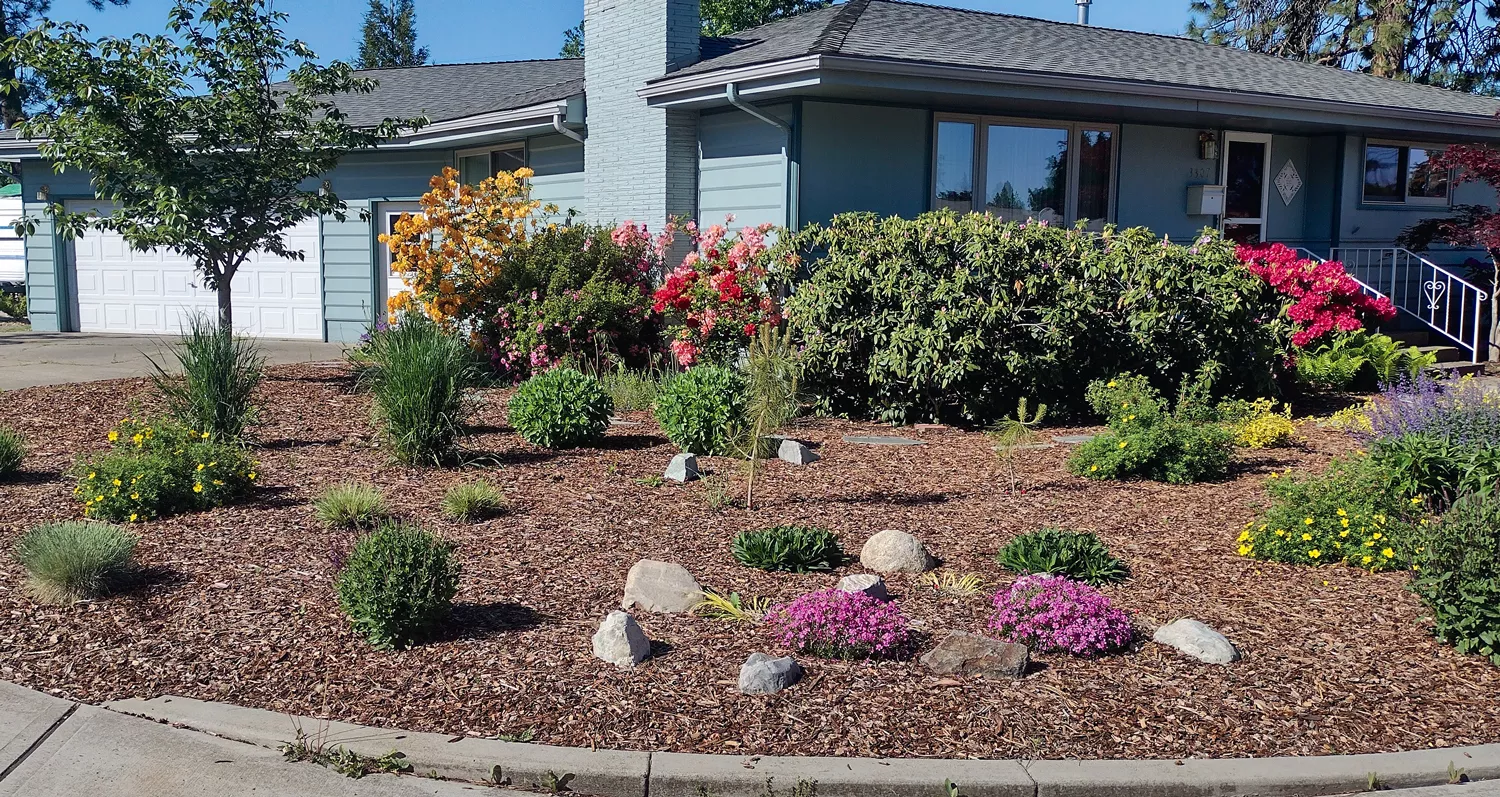
After the hardscape has been laid, he estimates that it usually takes two years of regular and thorough weeding to keep things in check. Dandelions and noxious weeds are abundant in the region and will happily take root in a freshly mulched yard despite adverse conditions. The mulch also needs to be refreshed at least every one or two years.
Furthermore, while it's possible to keep costs down by, say, sourcing secondhand materials, conversion has the potential to be spendy, even if you don't choose to hire professional landscapers. SpokaneScape participant John K. Wiley, who started xeriscaping his 6,000-square-foot corner lot in stages three years ago, ended up roughly $1,500 out of pocket once the compost, plants, piping and drippers were installed.
"It was quite a project," he says. "It was a lot of work."
Yet the payoff has been significant. And quantifiable.
"In August of 2021, my daily [water] consumption was about 600 units versus 800 the year before. So it went down right away with just half of the yard done. And then when I put in the rest of the system in 2022, it went down to 300. It dropped my water bill by a third, maybe even one-half," he says.
Whereas mowing the front yard used to take him a good hour per week, he now devotes just one or two days to weeding and pruning that area each season.
"Once it gets established and you dial in your drip amounts, it's low maintenance. I'm really sold on it. I'm pleased that I'm able to leave something for my kids instead of sucking up all the water in the aquifer, and yet our yard looks really good," he says.
"I guess the big drawback is that it can cost you money, because plants are expensive these days."
Sage Advice: Xeriscaping 101
Wesley Hill, who owns Floralia Nursery on North Monroe Street in Spokane, agrees that inflation and supply chain issues have been driving up nursery prices. At the same time, he notes something that Wiley also quickly discovered: Many native and drought-hardy plants, once established, can be cut and transplanted to fill in additional areas.
"We don't have to have scrappy, high-desert plants in order for them to be drought tolerant," says Hill. "You can xeriscape your yard and have a space that's stylish, cool, interesting and beautiful."
From Hill's point of view, one of the biggest hurdles to xeriscaping isn't necessarily budget, which can be accommodated in any number of ways, but the shift in mindset that xeriscaping entails.

"It's a different way of approaching gardening than what people are used to. It takes a bit of a leap of faith to be able to cut back on the water," he says. After a year or two of nurturing, most of the indigenous and climate-appropriate plants can survive with very little supplemental watering.
"You get things like manzanitas, which are native to the West Coast, or Mediterranean shrubs like rosemary, lavender and sage. They don't look like desert plants, but they are adapted to only get water in the winter, which is great for us. You can actually shorten the lifespan of these plants if they're overwatered during the summer."
And overwatering isn't the only potential pitfall. Adding fertilizers and amendments to the soil can be an expensive lesson in excess.
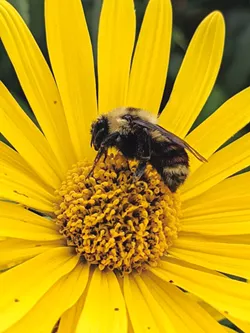
"I encourage people to find plants that like the soil you have rather than changing the soil to suit certain plants. A lot of plants are going to be happier in nutrient-poor, sandy soil. The rosemaries and lavenders and manzanitas that I mentioned earlier are all good examples of that. Yuccas will thrive. So will cacti."
When it comes to choosing plants, Hill urges customers to be mindful of microclimate, which is the tiny but important variations in light, temperature and moisture conditions around a property. He also stresses the importance of plant varieties that will attract and support pollinators — "bees and butterflies and hummingbirds" — and in turn strengthen the local ecosystem that relies on them. In his experience, it's one of the top reasons why his customers are drawn to xeriscaping in the first place.

